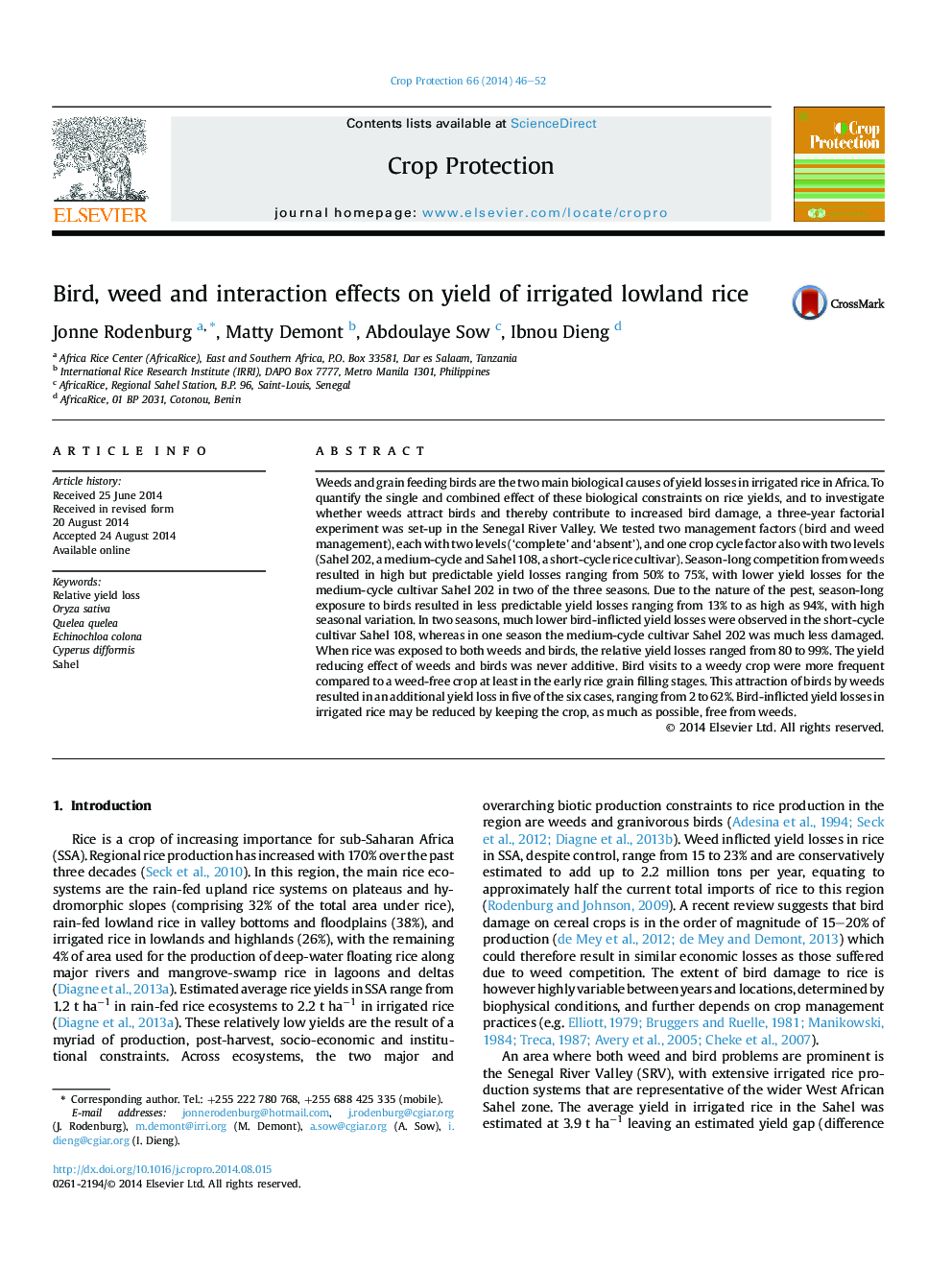| Article ID | Journal | Published Year | Pages | File Type |
|---|---|---|---|---|
| 6373696 | Crop Protection | 2014 | 7 Pages |
Abstract
Weeds and grain feeding birds are the two main biological causes of yield losses in irrigated rice in Africa. To quantify the single and combined effect of these biological constraints on rice yields, and to investigate whether weeds attract birds and thereby contribute to increased bird damage, a three-year factorial experiment was set-up in the Senegal River Valley. We tested two management factors (bird and weed management), each with two levels ('complete' and 'absent'), and one crop cycle factor also with two levels (Sahel 202, a medium-cycle and Sahel 108, a short-cycle rice cultivar). Season-long competition from weeds resulted in high but predictable yield losses ranging from 50% to 75%, with lower yield losses for the medium-cycle cultivar Sahel 202 in two of the three seasons. Due to the nature of the pest, season-long exposure to birds resulted in less predictable yield losses ranging from 13% to as high as 94%, with high seasonal variation. In two seasons, much lower bird-inflicted yield losses were observed in the short-cycle cultivar Sahel 108, whereas in one season the medium-cycle cultivar Sahel 202 was much less damaged. When rice was exposed to both weeds and birds, the relative yield losses ranged from 80 to 99%. The yield reducing effect of weeds and birds was never additive. Bird visits to a weedy crop were more frequent compared to a weed-free crop at least in the early rice grain filling stages. This attraction of birds by weeds resulted in an additional yield loss in five of the six cases, ranging from 2 to 62%. Bird-inflicted yield losses in irrigated rice may be reduced by keeping the crop, as much as possible, free from weeds.
Keywords
Related Topics
Life Sciences
Agricultural and Biological Sciences
Agronomy and Crop Science
Authors
Jonne Rodenburg, Matty Demont, Abdoulaye Sow, Ibnou Dieng,
